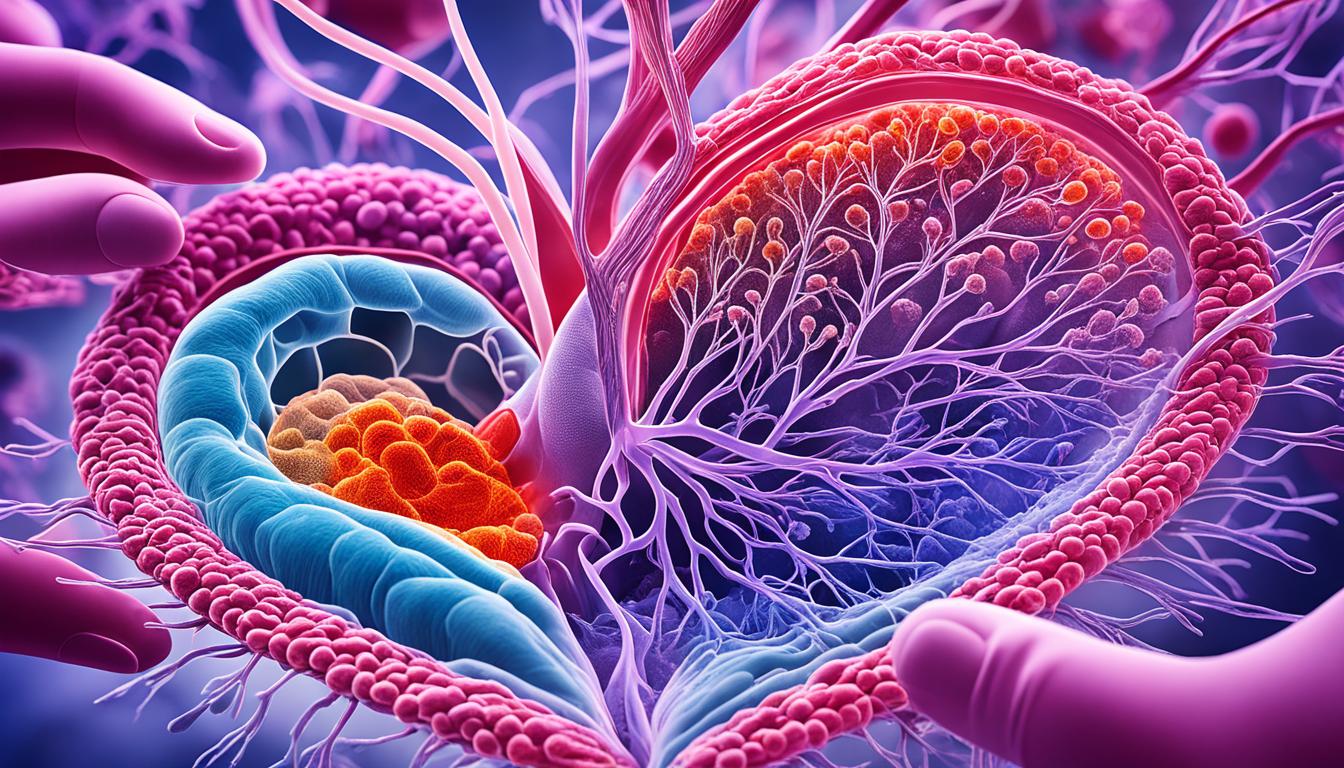Ventricular septal defect, or VSD, is a common heart issue from birth, affecting 15-20% of cases. It happens when there’s a hole in the heart’s wall that divides its two main sections. This mixing of blood can put extra stress on the heart.
The signs of VSD in kids are easy to spot. They might have a blue tint to their skin or lips (cyanosis). They could find it hard to breathe, struggle to gain weight, and feel tired a lot. Sometimes their hands and feet might look puffy. We don’t always know what causes VSD. But, things like infections during pregnancy or certain genes might play a role.
Doctors can find out if someone has VSD by checking their heart, usually with an echocardiogram. When it comes to treating VSD, big or tricky cases may need open-heart surgery. But sometimes, a less invasive approach called interventional closure is possible, which is much easier on patients. The treatment choice depends on the size and position of the hole.
Today, scientists are looking into new ways to treat heart defects like VSD. Stem cell therapy and tissue engineering might be the future. These methods plan to use living heart patches that can grow and change with the person. This could solve the problem of needing more surgeries as the child grows.
Key Takeaways:
- Ventricular septal defect (VSD) is a common congenital heart defect, affecting 15-20% of cases.
- Symptoms of VSD in children include cyanosis, difficulty breathing, poor weight gain, fatigue, and swollen extremities.
- Diagnosis of VSD can be made through a physical examination, echocardiogram, or other imaging tests.
- Treatment options for VSD may include open-heart surgery or interventional closure.
- Stem cell therapy and tissue engineering offer promising approaches for the long-term treatment of VSD.
Symptoms and complications of ventricular septal defect
Ventricular septal defect (VSD) is a heart issue that happens at birth. It means there’s a hole between the heart’s two lower chambers. Small holes might not show any symptoms. Larger ones can cause many problems.
People with VSD can experience things like:
- Cyanosis: Bluish skin and lips from not enough oxygen in the blood.
- Difficulty breathing: Feeling out of breath or breathing quickly.
- Poor weight gain: Not growing or developing as expected for babies.
- Fatigue: Feeling very tired or lacking energy.
- Swollen extremities: Hands, feet, or legs swelling.
If it’s not treated, VSD can cause big health issues, such as:
- Heart failure: When the heart can’t pump well, leading to body swelling.
- Pulmonary hypertension: High pressure in the lungs’ blood vessels, troubling the heart.
- Severe cyanosis: Skin and mucous membranes staying blue from low oxygen levels.
- Respiratory infections: More risk of lung illnesses from heart and lung problems.
- Other complications: This might be things like infections of the heart, irregular heartbeat, or blood clots.
Spotting VSD early and treating it is very important. Doctors can stop it from getting worse and lower the chance of trouble. Seeing a heart specialist regularly is key. They’ll make sure the care plan stays just right.
| Symptoms | Complications |
|---|---|
| Cyanosis (bluish skin and lips) | Heart failure |
| Difficulty breathing | Pulmonary hypertension |
| Poor weight gain | Severe cyanosis |
| Fatigue | Respiratory infections |
| Swollen extremities | Other complications |
Causes and diagnosis of ventricular septal defect
Ventricular septal defect (VSD) is a heart issue from birth. It has a hole in the heart’s wall. This wall usually separates the heart ventricles. We know some things that make VSD more likely.
Causes of Ventricular Septal Defect
Infections like rubella during pregnancy can increase VSD risk. Expecting mothers should prevent and treat infections. This effort can protect their baby’s heart.
Genetic issues and disorders like Down syndrome can also lead to VSD. They might change how the baby’s heart forms during pregnancy. This can cause problems in the heart’s structure.
Diagnosis of Ventricular Septal Defect
Diagnosing VSD looks at the patient’s health history, family heart issues, and a physical check-up. Doctors listen to the heart using a stethoscope. They’re checking for any unusual sounds, like a murmur.
An echocardiogram is often used to find VSD. This safe test makes detailed heart images with sound waves. Sometimes, a cardiac MRI or a CT scan is needed for more checking. These scans give a full look at the heart problem.
Spotting VSD early is very important. It helps know the size and place of the heart defect. This info is key for choosing the right treatment. Early action also cuts the risk of later problems.
So, even if the causes of VSD aren’t always clear, we know some factors that can lead to it. Quick and precise diagnosis helps doctors manage VSD. This leads to better treatment choices for patients.
Stem cell therapy and tissue engineering for ventricular septal defect
Stem cell therapy and tissue engineering are exciting areas in medicine. They are helping to treat ventricular septal defect (VSD). With new methods, they make grafts from living cells. These can be put into the heart to fix damaged areas.
Scientists are using different kinds of stem cells for VSD, like cardiac and mesenchymal stem cells. These cells can become heart cells and help repair the septal wall. This may improve how the heart works.
These special grafts made from stem cells can stay healthy for a long time. They can change and grow as the heart needs, fitting in well and working right.
Even though stem cell therapy for VSD shows big promise, more study is needed. We need to fully know how well they work and set clear methods. As research moves forward, new doors are opening in regenerative medicine. This gives hope to those facing VSD.

